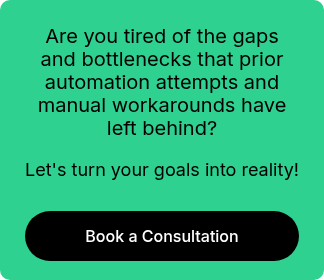Task Mining
Infocap’s task mining platform automatically records and analyzes user activity across applications, creating detailed process maps and actionable insights.
Our experts work with you to define the scope, ensure data privacy, and interpret findings, so you can identify repetitive tasks, manual workarounds, and inconsistent processes. Task mining not only highlights what to automate, but also provides the evidence needed to build a compelling business case for change. With Infocap, your organization can accelerate digital transformation by targeting the right tasks, improving employee experience, and maximizing ROI from automation investments.
Task Mining Capabilities
Task Mining empowers organizations to uncover the hidden details of how work actually gets done at the desktop level. Infocap uses advanced analytics and AI to capture user interactions—mouse clicks, keystrokes, application usage—across your workforce, creating a granular, real-world map of daily activities. This data reveals inefficiencies, bottlenecks, and opportunities for automation that are often invisible to traditional process mapping.
By understanding the true nature of work, Infocap helps you prioritize automation projects that deliver the greatest impact. Our human-centric approach ensures that task mining is conducted transparently and ethically, with employee input and privacy at the forefront, so your teams are empowered by change—not threatened by it.
What Intelligent Automation Means for Task Mining
Intelligent automation, when paired with task mining, means organizations can move from guesswork to precision in their automation strategy. Rather than relying on interviews or assumptions, you gain a data-driven understanding of how work is performed at the ground level. This enables you to identify the most time-consuming, error-prone, or costly activities and automate them for immediate impact. Infocap ensures that automation is targeted, effective, and embraced by your workforce, supporting a culture of continuous improvement and innovation.
User Activity Capture
Task mining tools unobtrusively record user actions—such as clicks, data entry, and navigation—across multiple applications and workflows. This provides a comprehensive, objective view of how employees interact with systems, revealing variations and inefficiencies that may not be apparent through observation or self-reporting. With this data, organizations can pinpoint exactly where automation will have the greatest benefit.
Process Discovery & Mapping
By aggregating and analyzing user activity data, task mining reconstructs detailed process maps that show every step, decision, and handoff in a workflow. These maps highlight deviations from standard operating procedures, manual workarounds, and redundant steps, enabling organizations to standardize and streamline processes before automating them.
Bottleneck & Waste Identification
Task mining identifies where employees spend excessive time—such as waiting for system responses, re-entering data, or switching between applications. By quantifying these inefficiencies, organizations can prioritize automation projects that will deliver the most significant time savings and productivity gains, while also improving employee satisfaction.
Automation Opportunity Assessment
Task mining provides the data needed to assess which tasks are best suited for automation, based on frequency, complexity, and impact. This evidence-based approach ensures that automation initiatives are focused on high-value opportunities, reducing risk and maximizing return on investment.
Areas to Automate
Data Entry & Validation
Identify repetitive data entry tasks across finance, HR, or customer service teams. Task mining reveals exactly how much time is spent copying and pasting information between systems, enabling you to automate these steps and free employees for more meaningful work.
Report Generation
Uncover manual steps involved in preparing and distributing recurring reports. Automation can gather data, populate templates, and distribute reports to stakeholders, reducing errors and saving hours each week.
Order Processing
Map the steps involved in processing customer orders, from data entry to approval and fulfillment. Task mining highlights manual bottlenecks and handoffs, enabling you to automate routine steps and accelerate order turnaround times.
Customer Onboarding
Analyze the onboarding process for new customers, identifying repetitive document collection, data entry, and verification tasks. Automating these steps speeds up onboarding, improves accuracy, and enhances the customer experience.
IT Service Requests
Examine how IT tickets are logged, categorized, and resolved. Task mining can reveal repetitive troubleshooting steps that are ideal candidates for automation, reducing response times and improving IT service quality.
Invoice Processing
Identify how invoices are received, entered, and validated across departments. Task mining uncovers variations and manual interventions, enabling you to automate extraction, validation, and approval workflows for faster, error-free processing.
Employee Onboarding
Map the steps involved in onboarding new hires, from document collection to system access provisioning. Task mining reveals manual bottlenecks, enabling you to automate repetitive tasks and ensure a smooth, consistent onboarding experience.
